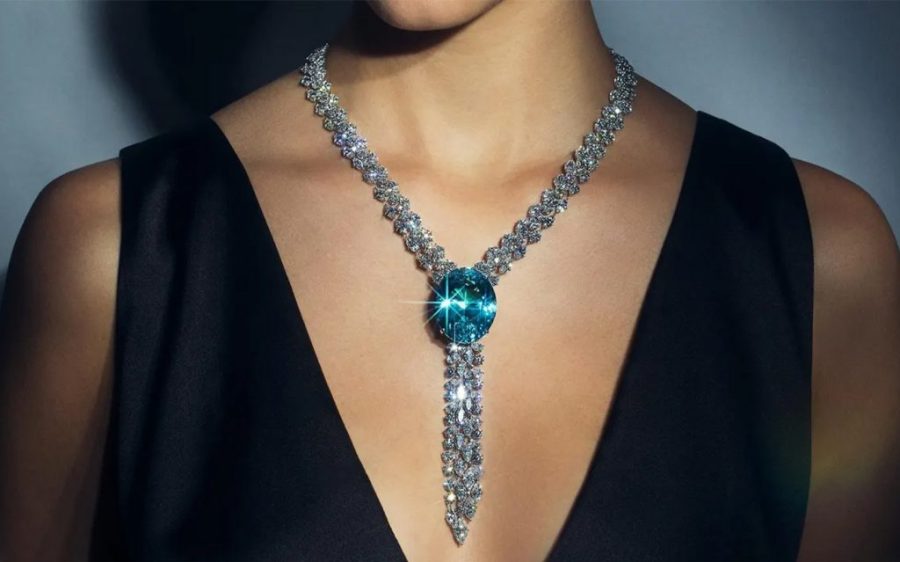A rare 93.94-carat Paraiba tourmaline gem from Mozambique is the highlight of Sotheby’s upcoming Magnificent and Noble Jewels auction in Geneva, according to reports.
The exquisite stone is the centrepiece of a lariat-style necklace crafted by Geneva jewellery house Adler Joailliers that also includes more than 76 carats of round, marquise- and pear-shaped diamonds. Sotheby’s expects the piece to fetch between US$1.3 million and US$2.5 million at auction.
Paraiba tourmalines of this size are extremely rare and gems with its “extraordinary electric blue hue” are “typically small and possess a significant degree of internal imperfections,” according to the auction house. It is the largest top-quality Paraiba tourmaline to be offered at auction.
[See more: Mozambican ruby mine set to tripe processing capacity]
Paraiba tourmaline takes its name from the state of Paraiba in north-eastern Brazil, where the gem was first discovered in the late 1980s. Decades later, the first similarly coloured gem-quality tourmalines were discovered outside Brazil, in Nigeria and Mozambique.
Paraiba now applies exclusively to greenish-blue specimens of vivid to deep saturation, regardless of where they were mined. This intense, striking colour quickly made Paraiba tourmaline one of the rarest and most sought-after coloured gems in the world.
Credit for the colour goes to the copper in its makeup. Mozambique has emerged as the leading global producer of cuprian (copper-bearing) tourmalines since the first deposit was discovered in 2003. Their colouration, while particular to the trace elements of the area, are much closer in saturation to Brazilian specimens than those found in Nigeria.






